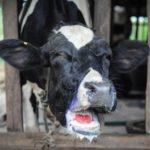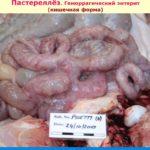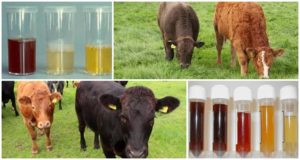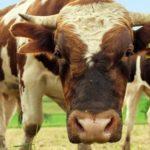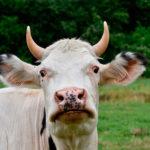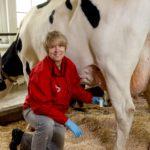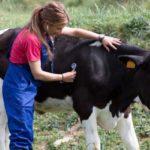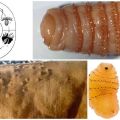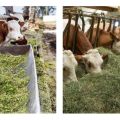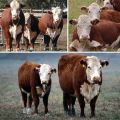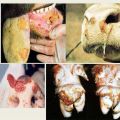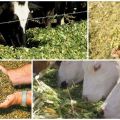The causative agent and symptoms of pasteurellosis in cattle, methods of treatment and vaccinations
Among the infections to which farm animals are exposed, the infection with pasteurellosis of cattle is especially dangerous. This is a contagious zoonosis that affects not only cattle, but also horses, sheep, pigs and birds. In addition to livestock, the disease can infect and kill wild animals and birds, such as deer, buffaloes, saigas. Laboratory animals also suffer from pasteurellosis. Young animals are more susceptible to infection.
Features of the disease
Pasteurellosis differs in that it affects various organs of cows and other animals. When it enters the bloodstream through damaged tissues, the infection quickly spreads throughout the body, affecting various parts. This leads to the fact that the disease does not have a pronounced clinical picture, since the cause of the death of animals is numerous secondary diseases. For example, if the lungs are damaged, pneumonia develops, the eye - conjunctivitis, the uterus - endometritis, and so on.
The special danger of pasteurellosis is that the animal has very little time, since microorganisms develop extremely quickly on any nutrient medium. This leads to the fact that the condition of the livestock is deteriorating rapidly.
Due to the fact that it is not possible to immediately recognize the cause of the infection, the disease can go far, and the animal can die. In addition, outward signs can be misleading by the similarity to anthrax, plague and other mass diseases. At the slightest suspicion of cattle pasteurellosis, it is necessary to call a veterinarian and carry out appropriate studies and examinations.
Causes of pasteurellosis
The causative agent that causes the disease is considered conditionally pathogenic, unstable in the external environment, destroyed by disinfection and heat exposure. The most common cause of infection is the bite of an animal - wild or domestic, for example, a dog or cat, or rodents. Getting into the victim's body along with saliva, the pasteurella microorganism quickly enters the bloodstream and spreads throughout the body with its current. There he finds a "weak link" - a weakened organ, which affects.
Also, the infection can get through mucous membranes, for example, through the mouth when eating food or grass contaminated with Pasteurella, as well as through the eyes or genitourinary organs.
Stages and symptoms of the disease
Pasteurellosis occurs in several forms, which differ in their own manifestations and symptoms. The incubation period lasts from a couple of hours to several days. The forms of the disease are different, but they are an immediate threat to the life of the animal.
At the same time, only an experienced veterinarian can deal with animal problems, since antibiotics are used as a medicine.
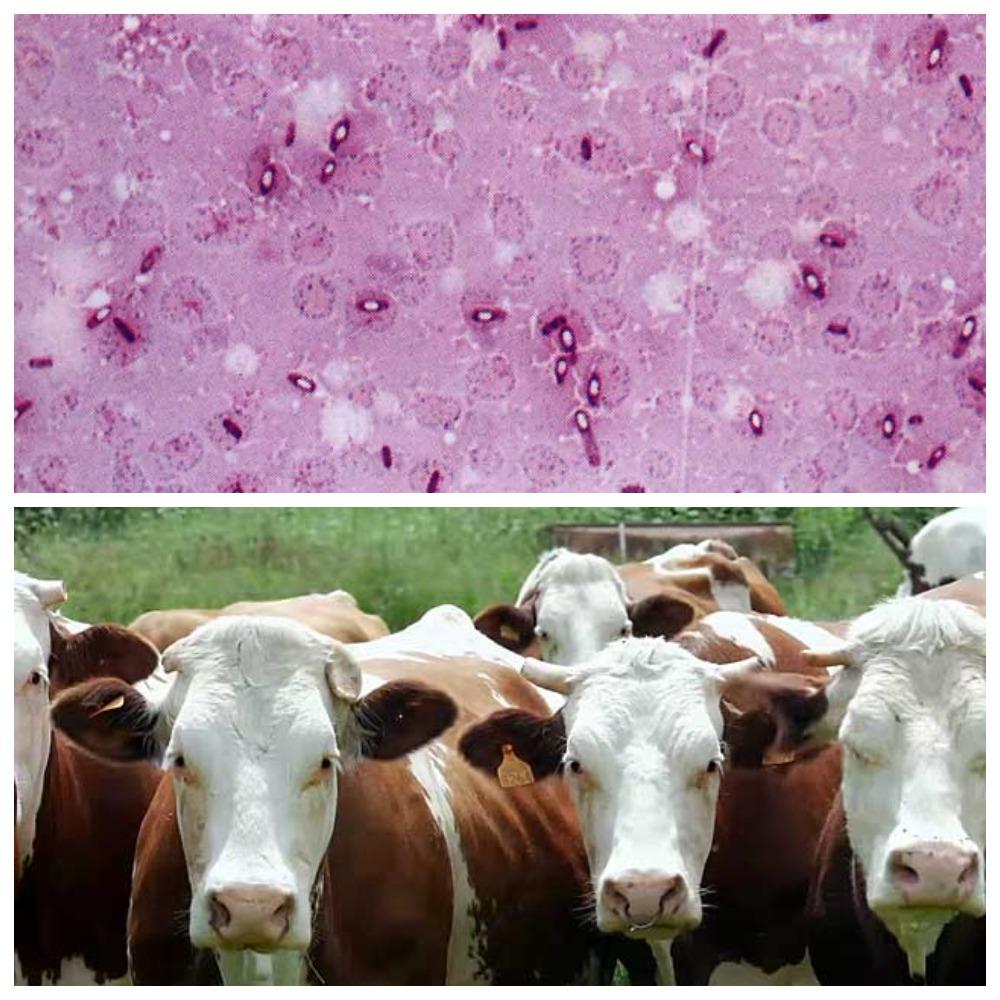
Sharp
The body temperature is elevated, and the stage can take three forms:
- Intestinal. Cattle develop signs that are characteristic of the digestive system: refusal to eat, bloating, constipation, or diarrhea.
- Thoracic (pulmonary). This form is characterized by signs of a cold: cough, runny nose, profuse nasal discharge, wheezing in the chest, and so on.
- Edematous. With it, parts of the body of a cow or bull swell, as fluid is retained in the tissues.
Each of the forms has its own manifestations that must be taken into account when diagnosing and differentiating from other infections. First, the animal suffers from constipation, then from diarrhea with blood. Epistaxis may also occur. Vaccination is necessary to save the animal, otherwise the cow will die within 48 hours.
Subacute
Cattle and other animals develop coughs and hyperthermia, purulent rhinitis, and swelling of the neck and head. When it comes to a dairy cow, milk is no longer produced. Without treatment, the sick animal will die within two weeks.
Hyperacute
The temperature rises sharply to 41 degrees, in severe cases accompanied by bloody diarrhea. The animal develops pulmonary edema and heart failure. No more than half a day separates him from death.
Chronic
This is the most dangerous and insidious stage, because the animal can be sick for up to 3 months without pronounced symptoms. It manifests itself as prolonged painful diarrhea, due to which the affected animal suffers from exhaustion and is greatly weakened.
How the problem is diagnosed
Diagnosis is difficult, since the clinical picture of the disease is similar to other dangerous infectious diseases. The assessment takes into account the age of the cattle, since young animals are the least susceptible to infection.
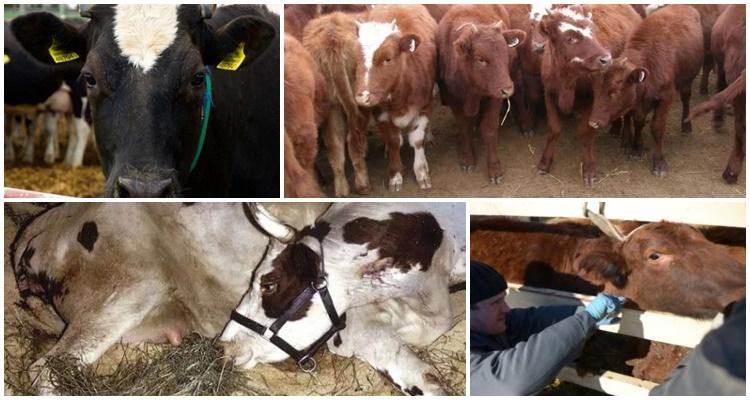
To get a 100% correct answer, you will need to conduct clinical and laboratory studies. For this, tissue samples, blood samples, smears from mucous membranes are taken from the animal. When the pathogen is isolated from several sources, the presence of pasteurellosis is considered established.
Rules for treating cattle problems
In order to avoid massive infections of the entire herd, sick animals are transferred to a separate room, and the calves are separated from their mothers.
Infected livestock needs warmth and dryness, so the room should be heated, protected from drafts and dryness.
Only a veterinarian can treat a sick herd or an individual sick cow, since it is necessary to know for sure that the animal is sick with cattle pasteurellosis. For treatment, antibiotics of the tetracycline series are used ("Tetracycline", "Biomycin", "Terramycin", "Levomycetin", "Streptomycin" and so on). It is necessary to act quickly, because at a number of stages of the disease, the animal has only a few hours left for salvation.
During treatment and recovery, cattle should receive a balanced diet in an easily digestible form. Animals must have free access to clean drinking water. It must be changed regularly and the containers must be disinfected. The same applies to the entire room. It also needs cleaning and disinfecting solutions.
Preventive measures
To avoid infecting the herd and spreading the infection, the following conditions must be met:
- Keeping newly acquired animals for at least 30 days separately from the entire livestock.
- Compliance with cleanliness and regular disinfection in the premises for livestock and staff.
- Availability of replacement clothing and footwear for farm staff.
- Compliance with sanitary and hygienic norms and rules.
- Inspection of areas for grazing livestock, selection of places remote from other cattle pastures.
- Minimizing herd contact with other domestic, agricultural and wild animals and birds.
- Feeding animals with clean feed, as well as observing the rules for storing products, including silage, concentrates, mixed feed, in a special room with observance of temperature conditions and shelf life.
- Since the source of infection can be any animals, including rats, it is necessary to regularly carry out deratization of premises, as well as to poison field mice on pastures used for grazing livestock and in fields sown with grass for hay.

Preventive measures can help limit infection in livestock, but only vaccinations can fully protect cattle from disease. Vaccination is carried out every six months, since the product provides protection against infection for a period of 6 to 12 months.
If an outbreak of cattle pasteurellosis has been noted on the farm or in the personal subsidiary plots, during the year it is possible to acquire new animals that have just been vaccinated and guaranteed to be protected from infection, as well as safe for the rest of the livestock.
Quarantine
A prerequisite for the safe replenishment of the herd is strict adherence to quarantine. Only by limiting the contacts of cattle can the latent form of the disease or its incubation period be revealed.
For this, at least a month of separate keeping of new animals is used. During this time, new arrivals need constant monitoring, which will reveal the slightest signs of the disease. In this way, it will be possible to detect not only pasteurellosis, but also a number of other, no less dangerous diseases.
After the quarantine period has passed and the animals show no signs of infection, newcomers can be transferred to a common herd without fear for the well-being of the entire livestock.
